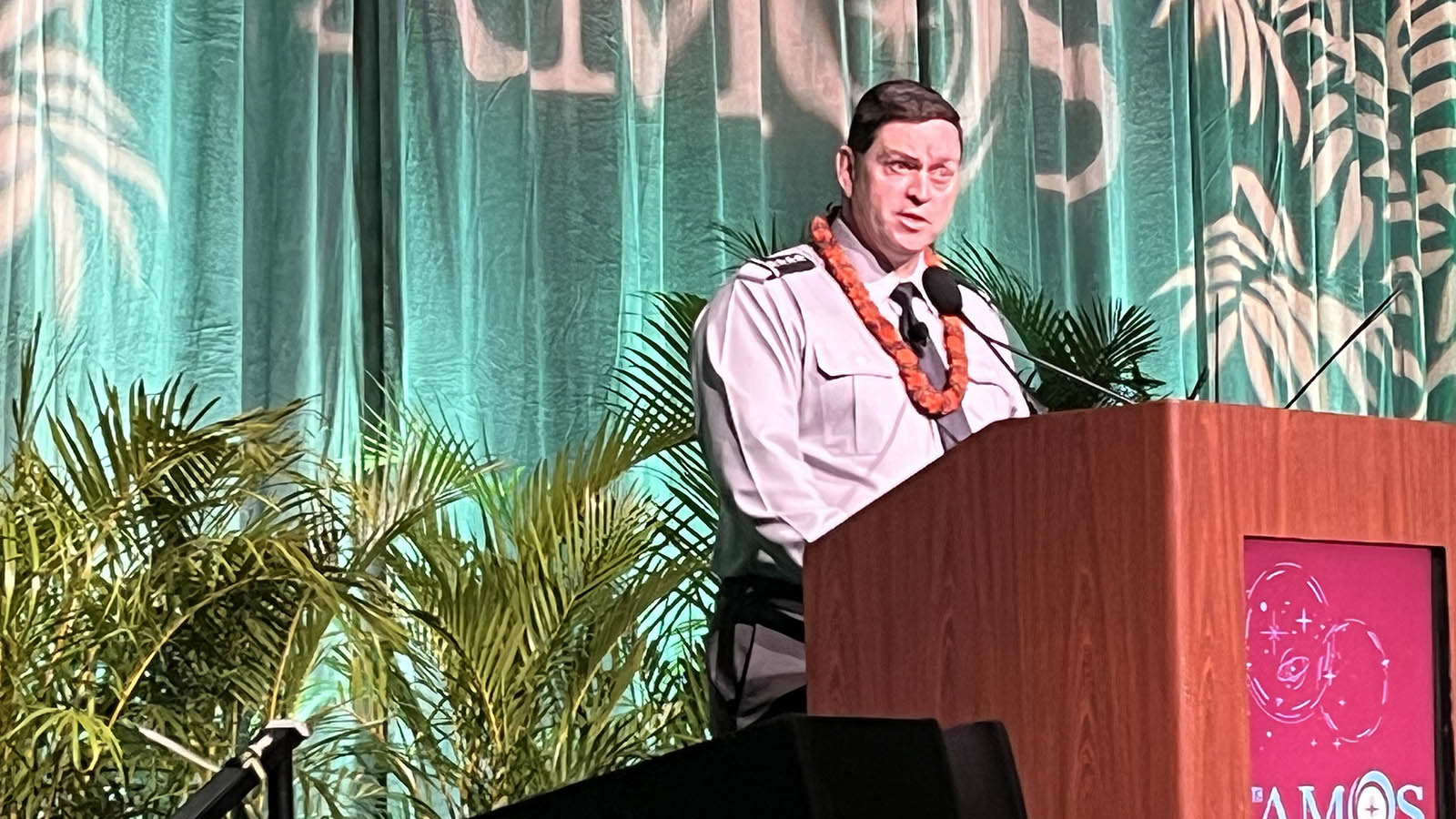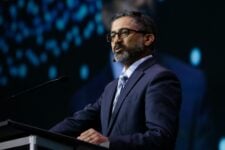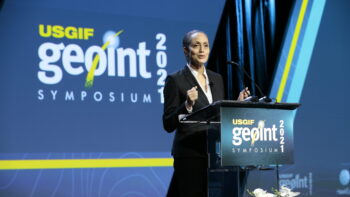
Chief of Space Operations Gen. Chance Saltzman speaks at the AMOS 2023 conference in Hawaii. (Theresa Hitchens / Breaking Defense)
AMOS 2023 — Citing the criticality of space domain awareness for everything the Space Force does, Chief of Space Operations Gen. Chance Saltzman said today that the service is concentrating on closing two key “technology gaps” in its capabilities.
The first is a dearth of systems to gather “exquisite, high fidelity information about what’s going on” in geosynchronous Earth orbit (GEO) “and beyond.” The second is the “lack of sensors in the Southern Hemisphere” needed to provide “comprehensive” coverage of adversary satellites as they pass over the region in low Earth orbit.
“Truly the most foundational thing that we do for all our mission areas is space domain awareness,” Saltzman told the Advanced Maui Optical and Space Surveillance Technologies (AMOS) Conference in Hawaii, referring to the ability to not just track, but also characterize the functions of, and determine the possible threat from, space objects.
To help fill the gaps, SDA is “soon” going to be the subject of a “force design” effort by the Space Force’s Space Warfighting Analysis Center (SWAC), he said, that will first look at “what’s the fastest way to evolve the architecture that we know we’re going to need?”
Then, Saltzman said, the SWAC will drill down into “where… those elements come from: some from industry, some commercial, government inherent … some from our allies and partners worldwide? How do we put that together so we collectively understand what does the space domain architecture need to look like?”
He explained that the goal is to build out what he called an “objective force structure” — that is, a blueprint for setting requirements for building a suite of necessary capabilities.
“If I can list out what that objective for structure looks like, then I think it gives us some guidance that says, ‘OK, these are the things that we think we do well and we want to double down on. These are the areas where we think there are some shortfalls or some opportunities that we can advance.'”
Developing that structure, he added, will allow the Space Force “to get the most out of what the industry and our allies and partners can bring to bear on this mission set and move quickly into what I’ll say is timely, actionable, space domain awareness, because that’s really the goal.”
In a briefing to Breaking Defense and Space News following his AMOS keynote, Saltzman said another really hard challenge for improving SDA is “data fusion” — that is, being able to “pull in disparate data” and “disparate data sources,” and put everything together in ways that “improve the output” for operators.
“It is the standard, it is the gold standard. So everybody is pursuing that pot at the end of the rainbow,” he said. “Fusion of the data is the most important thing we’re pursuing. Because just more data doesn’t necessarily help if you can’t use it properly.”
Saltzman acknowledged the long-standing difficulties that have beset efforts to move from the legacy computers and software — known as SPADOC and CAVE-net — to more modern systems that actually can handle seamless data fusion. He explained that a key problem was that earlier efforts for replacing those systems suffered from setting the requirements too broadly and trying to do “too much” at the same time.
With the current replacement program, called the Advanced Tracking and Launch Analysis System, or ATLAS, being developed by L3Harris, he said the Space Force is instead taking a “modular approach” meant to solve one problem at a time and gradually get to the place where all the functions of the older systems can been transferred over to the new one.
“It is complicated math,” Saltzman said, though not “insurmountable.” Still, he stressed, because “it is tough” the service is taking “a real serious, deliberate approach.”
Asked by Breaking Defense about a possible timeframe for being able to finally abandon the legacy systems, Saltzman in essence said it would take as long as it takes.
“We’ve got to be deliberate in this because the stakes are high to make sure we get this right,” he said.






















